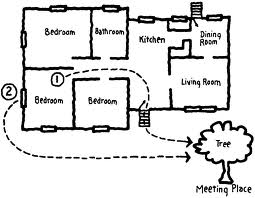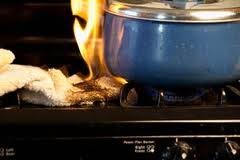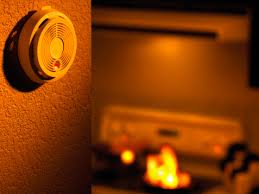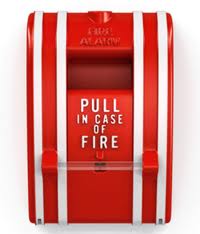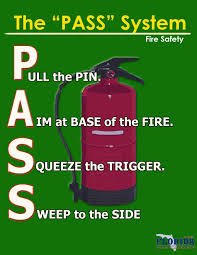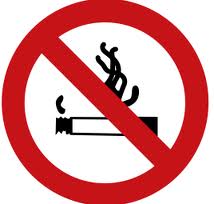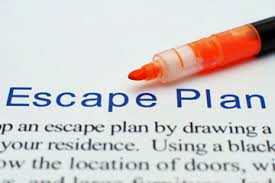Site Access – Emergency Plan
Preparation for an emergency may seem like a lot of work. It is. Preparing does take time and effort. So do a little at a time, as your energy and budget permit. The important thing is to start preparing. The more you do, the more confident you will be that you can protect yourself, your family and your belongings.
EVACUATION:
Storage –
- Store needed aids in a consistent, convenient, and secured location.
- Store emergency supplies in a pack or backpack attached to walker, wheelchair, scooter, etc.
- Store needed mobility aids (canes, crutches, walkers, wheelchairs) close to you in a consistent, convenient and secured location.
- Keep extra aids in several locations, if available.
Emergency Kit –
- Keep a pair of heavy gloves in your supply kit to use while wheeling or making your way over glass and debris.
- If you use a motorized wheelchair/scooter, consider having an extra battery available. A car battery can be substituted for a wheelchair battery but this type of battery will not last as long as a wheelchair’s deep-cycle battery. Check with your vendor to see if you will be able to charge batteries by either connecting jumper cables to a vehicle battery or by connecting batteries to a specific type of converter that plugs into your vehicle’s cigarette lighter in the event of loss of electricity.
- If you do not have puncture proof tires, keep a patch kit or can of “seal-in-air product” to repair flat tires and/or also keep an extra supply of inner tubes.
- Store a lightweight manual wheelchair, if available.
Evacuation Plan –
- Arrange and secure furniture and other items to provide paths of travel and barrier free passages.
- If you spend time above the first floor of an elevator building, plan and practice using alternate methods of evacuation. If needed, enlist the help of your personal support network.
- If you cannot use stairs, discuss lifting and carrying techniques that will work for you. There will be instances where wheelchair users will have to leave their chairs behind in order to safely evacuate a structure. Sometimes transporting someone downstairs is not a practical solution unless there are at least two or more strong people to control the chair. Therefore, it is very important to discuss the safest way to transport you if you need to be carried, and alert them to any areas of vulnerability. For example: the traditional “fire fighter’s carry” may be hazardous for some people with some respiratory weakness. You need to be able to give brief instructions regarding how to move you or have a word processed statement or visual image stored in your kit to give to rescuer.
FIRE SAFETY:
Individuals with mobility impairments have unique needs and capabilities that put them at risk for fire injuries. These limitations, such as wheelchair confinement, may also subsequently increase the chance that the individual will accidentally start a fire. Traditional fire safety messages are designed with the capabilities of the non-disabled population in mind. A disabled individual may have difficulty performing even the most basic fire safety practices. Make an emergency plan now!
Before the Fire
· Identify the nearest fire exit
· Install smoke alarms
· Live near an exit
· Plan and practice escape plans
· Involve the fire department
During the Fire
· Get out and stay out
· Test doors before opening them
· Stay low and go
· What to do if you are trapped
· Stop, drop, and roll
Fire Prevention
· Cooking
· Electrical safety
· Smoking
· Space heaters
· Heating
· Fireplaces
Before the Fire
Identify the Nearest Emergency Exit.
Whether you are at home or elsewhere, you should always know the location of the nearest exit. This could save your life in an emergency.
Heed Fire Safety and Design Guidelines.
Walkways and doorways should accommodate any mobility impairment the individual may have. For example, doorways should accommodate a wheelchair’s width, and flooring material should accommodate artificial limbs or canes.
Install Smoke Alarms.
The single most important step you can take to save your life during a fire is to install a smoke alarm that suits your needs. A working smoke alarm can make a vital difference in the event of a fire and may reduce the risk of dying in a fire by as much as 60 percent. A properly functioning alarm can alert you to the presence of deadly smoke while there is still time to escape. Place alarms next to each sleeping area and on every floor of your home. Keep smoke alarms clean by vacuuming or having them vacuumed regularly. Test batteries monthly, and replace them annually. Ask friends, family members, building managers, or someone from the fire department to install and test the batteries of a smoke alarm if it is hard to reach. If your smoke alarms are hard-wired (connected to the electric circuitry of your residence), make sure they are also equipped with battery backups.
To accommodate wheelchair users in public buildings, manual alarm pull stations should be mounted no higher than 48 inches from the floor. If manual alarms are mounted higher than 48 inches, these devices should be retrofitted with attachments that make them accessible to a wheelchair user.
Have a Fire Extinguisher- and Learn How To Use It.
If you are confined to a wheelchair, consider mounting (or having some-one mount) a small “personal use” fire extinguisher in an accessible place on your wheelchair, and become familiar with its use. Then, if you cannot “stop, drop, and roll” during a fire, you should “pull, aim, squeeze, and sweep.”
Live Near an Exit.
If you live in an apartment building, try to get an apartment on the ground floor. If this is not possible, know where the exit stairwell is and plan to wait there for help if you can-not take the stairs in the event of a fire.
If you live in a multistory house, try to sleep on the ground floor. Make sure a phone is next to your bed, within arm’s reach. Keep emergency telephone numbers handy as well. (Perhaps in the emergency kit you have in your wheelchair.) If necessary, construct an exit ramp for emergency exits. It is recommended that ramps be at least 36 inches wide. Guardrails and handrails should be 44 to 48 inches high and 34 to 38 inches wide. (See Ramp section for more information on ramp specifications.)
Plan and Practice Escape Plans.
Knowing your escape plan is one of the most important steps you can take to save your life in a fire. Plan your escape around your capabilities. Know at least two exits from every room. Make sure you can unlock all your doors and windows. Be sure you know how to open your windows. If security devices, such as bars, are installed across the windows, ensure that they release from the inside. Make any necessary accommodations (such as installation of exit ramps) to facilitate an emergency escape.
Involve the Fire Department.
Ask the fire department to help you plan an escape route, and inform them of your special needs. Ask the fire department to help identify any fire hazards in your home and explain how to correct them. Any areas you plan to use as a rescue area must be identified and agreed upon by you and officials from the fire department. Learn the fire department’s limitations, and make fire officials aware of yours.
During the Fire
Get Out and Stay Out.
Leave your home as soon as possible. Do not try to gather personal possessions or attempt to extinguish a fire. Do not use the elevator. Once out, do not go back inside.
Test the Doors Before Opening Them.
Using the back of your hand, reach up high and touch the door, the doorknob, and the space between the door and the frame. If anything feels hot, keep the door shut and use your second exit. If everything feels cool, open the door slowly and exit as low to the ground as possible if smoke is present.
Stay Low and Go.
Crawl low and keep under the smoke, if you are physically able. If not, try to cover your mouth and nose to avoid breathing toxic fumes, and make your way to safety as quickly as possible.
What To Do If You Are Trapped.
Close all the doors between you and the fire. Fill cracks in doors and cover all vents with a damp cloth to keep smoke out. If possible, call the fire department and tell them where you are located. Signal rescuers from a window with a light-colored cloth.
Stop, Drop, and Roll.
If any part of you catches fire, do not run and do not try to extinguish the flames with your hands. Cover your face with your hands. Drop to the ground, rolling over and over. If you have a disability that prevents your taking these actions, try to keep a flame-resistant blanket or rug nearby to smother any flames.
Fire Prevention
Cooking.
Never leave the stove unattended while cooking. If you need to step away from the stove, turn it off. Wear tight-fitting clothing when cooking over an open flame, and keep towels and potholders away from the flame. If food or grease catches fire, smother the flames by sliding a lid over the pan and turning off the heat. Do not try to use water to extinguish a grease fire. When deep-frying, never fill the pan more than one-third full of oil or fat. Never put foil or other metals in the microwave. Make sure the stove is kept clean and free of grease buildup. Turn pot handles away from the front of the stove so they cannot be knocked off or pulled down.
Electrical Safety.
Electric blankets should conform to the appropriate standards and have overheating protection. Do not wash blankets repeatedly as this can damage their electrical circuitry. If an appliance begins to smell suspicious or emit smoke, unplug it immediately. Replace all frayed or broken electrical cords. Never use an appliance with exposed wires. Never overload extension cords, and keep them out of traffic areas. Use only tested and UL-listed electrical appliances.
Smoking.
Never smoke in bed. Make sure that you are alert when you smoke. If a gas stove or oxygen source is nearby, do not smoke. Place signs stating that oxygen is in use and warning visitors to refrain from smoking. Do not smoke while under the influence of alcohol or if you are taking prescription drugs that can cause drowsiness or confusion. Never leave smoking materials unattended, and collect them in large, deep ashtrays. Check around furniture, especially upholstered furniture, for any discarded or smoldering smoking materials. Soak the ashes in the ashtray before discarding them.
Space Heaters.
Give space heaters space. Keep heaters at least 3 feet from any combustible material, including people. Follow the manufacturers’ directions regarding operation, fueling, and maintenance of your space heater. Do not use heaters or other heating devices to dry clothing.
Heating.
Have your heating systems and chimneys checked and cleaned annually by a professional. Never store fuel for heating equipment in the home. Keep fuel outside or in a detached storage area or shed.
Fireplaces.
Open fireplaces can be hazardous; they should be covered with tempered glass doors and guarded by a raised hearth 9 to 18 inches high.
The U. S. Fire Administration considers smoke alarms to be the single most important piece of fire safety equipment available today. Exit planning is also extremely important, especially for individuals who may have difficulty exiting a burning building. Make an emergency plan now.
Additional Resources:
Fire Risks for the Mobility Impaired:
http://www.usfa.fema.gov/downloads/txt/publications/fa-204.txt
Tips for People with a Mobility Impairment:
http://www.bepreparedcalifornia.ca.gov/BePrepared/PeopleWithDisabilities/Pages/TipsforPeoplewithaMobilityImpairment.aspx
